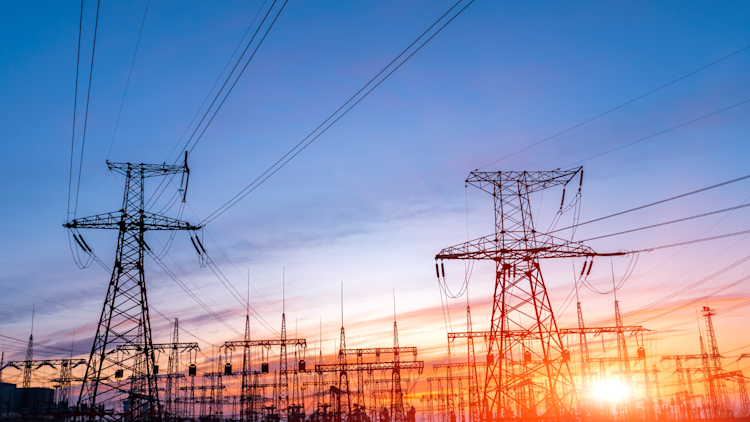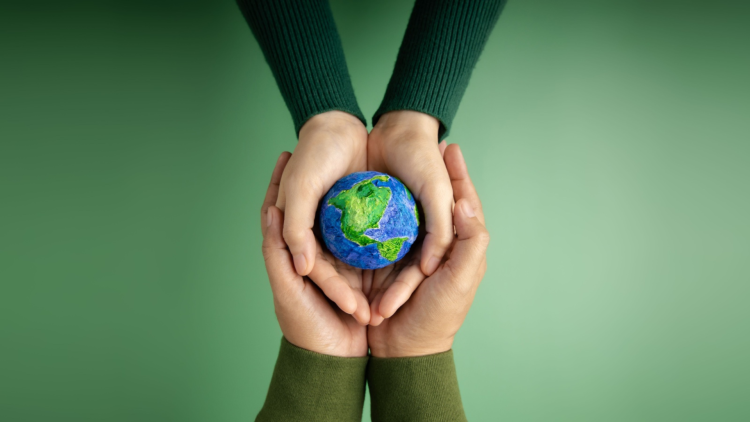Top Reasons to Have Hope for the Future in 2025
We review the latest breakthroughs and events inspiring hope on climate change and provide an update on ecobee's sustainability journey.
by ecobee on 01/13/2025 in Better Planet
22 min read
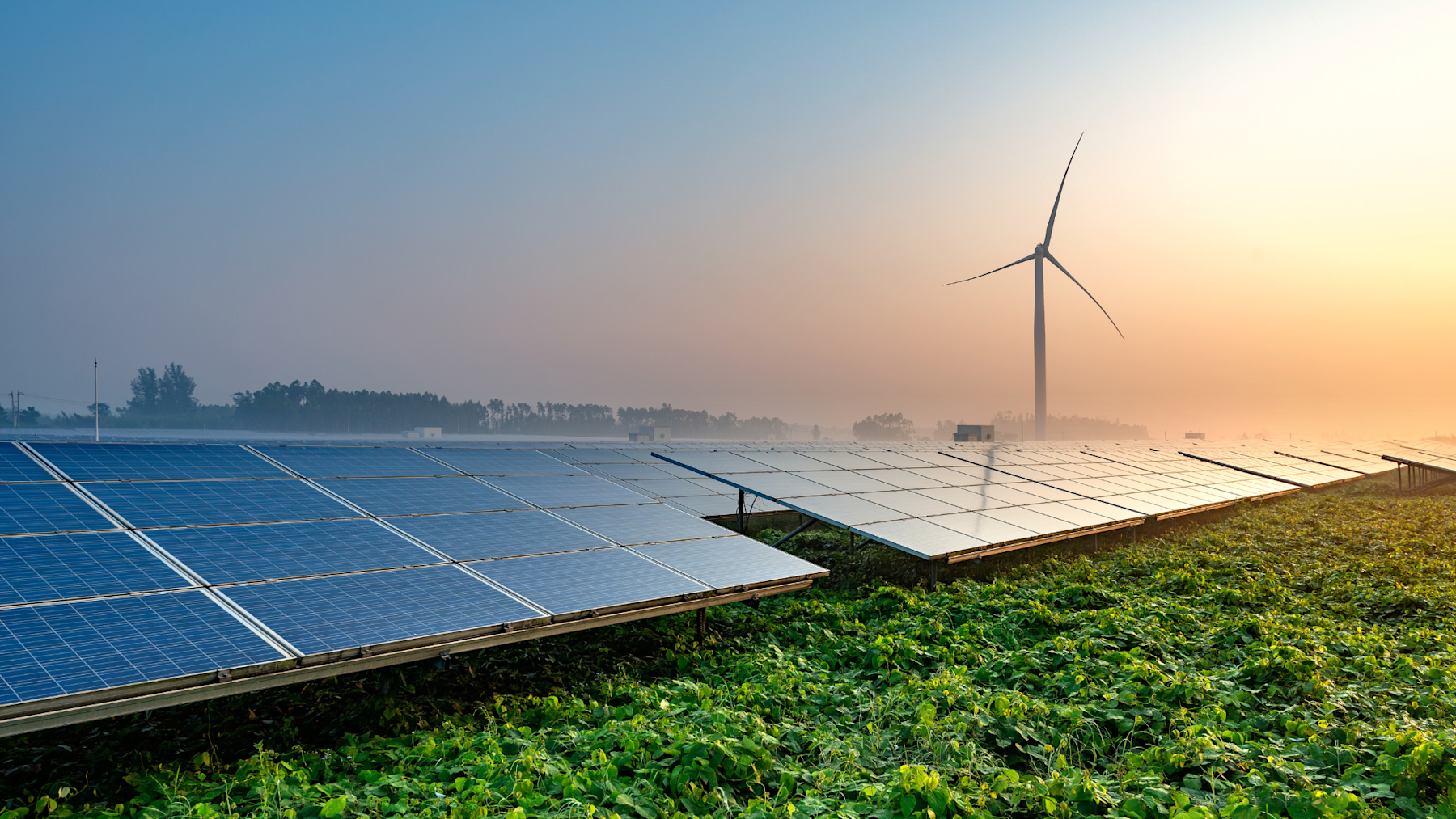
After the excitement and promise of a New Year’s celebration, there are plenty of reasons to keep that hopeful feeling alive. For the fifth year in a row (2021, 2022, 2023, 2024) we invite you to join us in going beyond the negative headlines to uncover some of the biggest and best reasons for hope in 2025.
In this edition, we deliver important news and reactions to the November 2024 Global Climate Conference, report on a modern gold rush in California, and cover the latest developments in the world of electric vehicles (EVs) and battery science. So stick with us as we bring you all this and more to highlight the latest breakthroughs and trends from around the world that are making a difference.
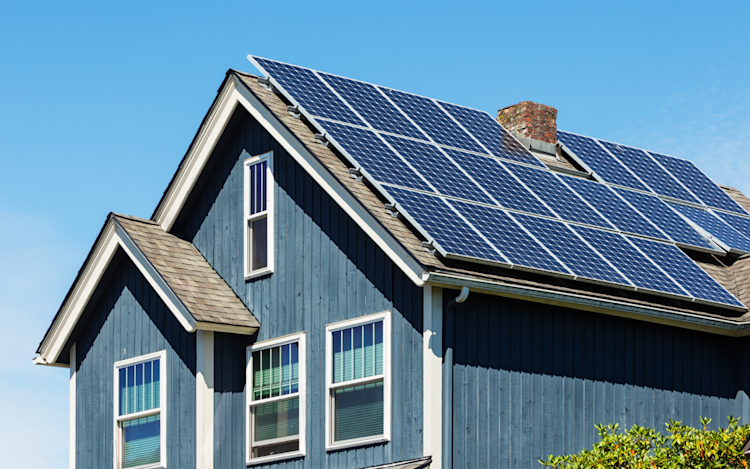
Solar for all becoming a reality.
Some people argue against policies that encourage rooftop solar, claiming the benefits mostly go to the wealthy. However, while seemingly everything else in the world has been getting more expensive, a 2024 Lawrence Berkeley National Laboratory report shows that rooftop solar is becoming more affordable. The median income for households installing rooftop solar decreased from $141,000 in 2010 to $115,000 in 2023—a $26,000 drop.
Why more homeowners are turning to rooftop solar.
Between 2010 and 2023, the cost of a residential rooftop solar system dropped by 64%, according to the National Renewable Energy Laboratory. Meanwhile, solar panels themselves became 60% cheaper and 40% more efficient. The benefits of falling prices aren’t just going to manufacturers and installers, they’re being passed along to customers. The average cost of a 6-kW residential system before incentives plunged from $52,200 in 2010 to just $18,000 in 2023.
Today’s homeowners and solar enthusiasts also benefit from programs designed to make solar energy ever more accessible and financially rewarding:
-
The Federal Solar Investment Credit (ITC) allows homeowners to deduct 30% of the costs of their solar installation from their federal taxes.
-
Net Metering Programs in many states allow the homeowner to reduce their electricity bills by selling their unused electricity back to the grid.
-
Community Solar Programs allow people and businesses who may not be able to install solar panels on their property to invest in a large solar system in their area and receive credits on their electricity bill for the energy produced by their share.
These initiatives have created pathways for households at different income levels, small businesses, and renters to participate in the solar revolution.
Did you know? ecobee’s parent company Generac is delivering a growing number of residential solar and energy storage solutions. Learn more about solar battery storage solutions from Generac.

Global impact.
The impact of these trends isn’t just about household savings; it’s reshaping the global energy landscape. Between 2020 and 2024, worldwide rooftop solar capacity surged from 103 GW to 319 GW, equivalent to the output of roughly 48 nuclear power plants. Rapid, continued growth in all forms of renewables remains essential. The IEA states that global renewable capacity must triple over the next five years (by 2030) to meet the climate goal set by the 2015 Paris Agreement of limiting global warming to 1.5°C above pre-industrial levels.
So, while critics once dismissed rooftop solar as a luxury item for the wealthy, the story in 2025 is much different. Falling costs, supportive policies, and rising electricity prices, have made installing a solar system more attainable and advantageous than ever. And with low-cost solar expected to deliver 80% of the increase in global renewable capacity over the next five years—demand is soaring, and the future of solar has never looked brighter.
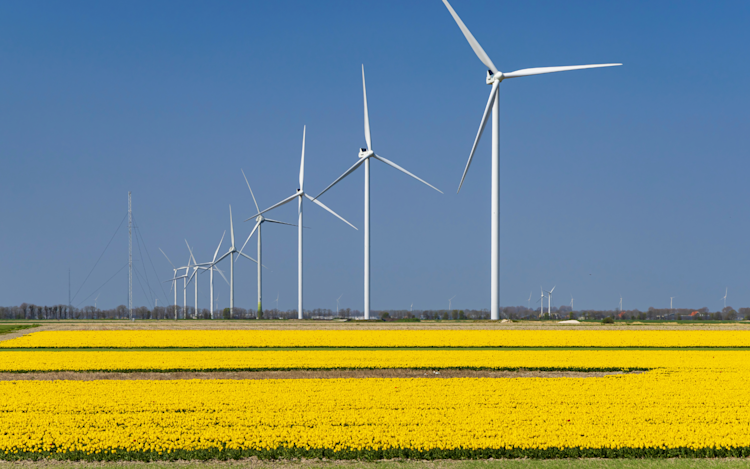
Wind and solar supplied more power on the U.S. grid than coal in 2024.
In 2024, various outlets reflected on the astounding fact that renewable energy (solar and wind) generated more power than coal for the first time.
Indeed, when you step back and reflect on the growth in wind and solar (and the corresponding decline in coal) over the past 20 years, the change is nothing short of incredible. According to the New York Times, in 2004, coal was the dominant energy source in the U.S. energy mix, meeting just over 50% of the United States electricity needs. By 2023, coal’s share of the U.S. had fallen to less than 15%. At the same time, solar and wind’s share of the nation’s electricity output grew from practically nothing in 2004 to more than 17% in 2023.
As we reported in the 2023 edition of this article, by then, unsubsidized solar and wind were already some of the cheapest sources of energy in history. Looking forward, the International Energy Agency (IEA) expects the global share of wind and solar to double and perhaps triple by the end of the decade. Continuing on its meteoric rise, solar is expected to surpass both wind and hydroelectricity to become the largest renewable generation source in the world by far.
The IEA expects the global share of wind and solar to double and perhaps triple by the end of the decade.
What's next for coal.
Coal remained the world's largest source of electricity generation in 2024, but its dominance is fading. In the U.S., coal plants are closing at a rapid pace, giving way to solar, wind, and natural gas—more affordable and efficient energy alternatives. Transitioning away from coal is essential to meeting the Paris Agreement’s goal of limiting global warming to 1.5°C above pre-industrial levels. Supporting these global climate objectives, the outgoing Biden Administration has set an ambitious target for the U.S. to achieve a carbon pollution-free power sector by 2035.
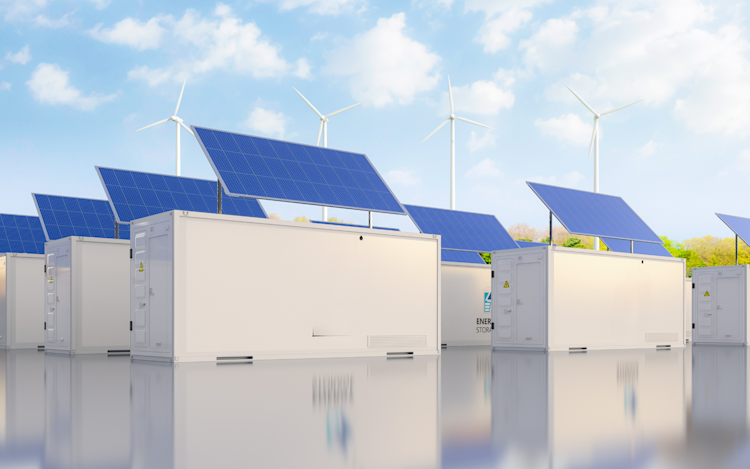
California meets renewables challenge with battery storage.
Solar power is abundant during the day in sun-drenched California. But what about the evening when the sun goes down and people get home from work and electricity use soars? The answer is batteries.
California is using battery storage technology, including distributed batteries on homes and businesses, to store abundant daytime solar energy, enabling utility providers to meet the evening surge in demand when people return home and use appliances, lights, and air conditioning.
By storing excess solar and wind energy for later use, they are enabling Californians to use sun power after dark. Between 7 p.m. and 10 p.m. April 30, 2024, for example, batteries supplied more than one-fifth of the state’s electricity, reaching a peak output of 7,046 megawatts for a few minutes, which is like the output from seven large nuclear reactors.
For a few minutes on April 30, 2024, California batteries hit 7,046 MW peak output—equivalent to the power of seven large nuclear reactors.
The anatomy of a charge.
Energy storage varies widely. Not all batteries rely on chemicals; some, like pumped hydro and compressed air systems, use geography—hills and caverns—to store energy. One huge advantage of batteries of the chemical variety, lithium-ion, for example, is that they can be scaled up to serve the massive storage needs of utility providers or scaled down to power homes and electric vehicles. The versality offered by lithium-ion and other chemical batteries and falling prices are key reasons why solar-rich California, with its abundant sunshine and ambitious climate goals, has built the most giant chemical batteries in the world outside of China since 2010.
A new gold rush in the Golden State.
According to the International Energy Agency, battery storage was the fastest-growing energy technology in the world in 2023, with the global capacity more than doubling year-over-year. In this golden age of batteries, the Golden State has emerged as a North American battery energy storage leader. Between 2020 and 2024, the state increased its energy storage capacity from 500 MW to 6,600 MW. For context, 6,600 MW of battery capacity can power 6.6 million homes for up to four hours.
Having already grown its energy storage capacity thirteenfold in just a few years, California will need to increase this figure another 10 times by 2045 to meet its ambitious climate goals. Given the remarkable pace of progress so far, it will be fascinating to watch California’s grid continue to evolve in the coming years.
Did you know? Utility-scale systems are an important component of modernizing and greening the grid; so too are solutions on the residential scale. Generac, ecobee’s parent company, is shaping the future for consumers and business , offering solar battery solutions for homeowners and a variety of industrial power solutions.
Everything is bigger in Texas, especially renewables.
Where California leads in solar power and battery storage, Texas leads in wind power. Thanks to its vast spaces, strong winds, supportive policies, and strategic investment, the Lone Star State has three times as many wind turbines as second-place Iowa.
The Texas grid, operated by the Electric Reliability Council of Texas (ERCOT), is famously isolated from the other major neighboring grids. Texas is the only state in the Lower 48 to have its own power grid with limited connectivity to surrounding states. However, this may soon change as the Department of Energy has allocated $360 million to connect ERCOT to the national grid.
This funding comes in the aftermath of the February 2021 winter storm, which exposed weaknesses in Texas’s isolated power grid. Extreme cold weather led to a massive increase in statewide electricity demand. High demand coupled with inadequate winterization of power facilities and fuel supply issues caused hundreds of failures at power generation facilities, leading to blackouts across Texas. Since then, ERCOT has warned of the potential for future outages if severe winter storms return, pushing policymakers to seek solutions to maximize the state’s immense energy production capabilities and abundant renewable resources.
Texas’ famously isolated power grid may not remain for much longer, with $360 million in federal funding aimed at connecting it to the national grid.
First in wind energy production and second in solar and with only limited outlets for exporting its surplus electricity, Texas often produces more electricity than it can use. Connecting to the national grid could enable the state to export excess electricity and import power during shortages, improving reliability and reducing the risk of another grid failure. From an environmental perspective, fully leveraging Texas’s renewable resources would also cut greenhouse gas emissions and air pollution.
Since the $360 million Southern Spirit transmission project was announced on October 3, 2024, there have been some early obstacles. But the opportunities to transform Texas’s wind and solar energy bounty into a benefit for the entire region, while bolstering its own resilience, are as endless as the Texas sky.
Expanding transmission infrastructure is essential not only for Texas but for all North America to fully unlock the potential of renewable energy. Among other benefits delivered, new corridors would efficiently move surplus solar and wind power from generation hubs, like the Great Plains, to population centers, ensuring cleaner energy reaches more people.
Did you know? Texas is also utilizing distributed solar, batteries, generators and smart thermostats (including ecobee’s!) to reduce demand during peak times and provide energy reliability and resiliency for Texans.
Developing countries secure at least $300 bn per year in climate finance at COP29.

Sometimes, a win doesn’t feel like a win until you weigh it against the other possibilities. This next story is a case in point.
The importance of the most recent annual global climate conference, known as COP29 or Conference of the Parties 29, on the global stage cannot be understated. As we highlighted in last year’s column, delegates at last year’s conference in Dubai were able to achieve a breakthrough 30 years in the making: a global commitment to “transition away” from fossil fuels.
This year’s heightened geopolitical tensions loomed large, with the potential that the U.S. might withdraw from the Paris Agreement under the incoming Trump Administration. Against that backdrop, expectations at this conference were subdued, but there was also an understanding that this year’s COP29 would focus on climate finance, specifically on increasing financial support for developing countries.
Developing countries bear the brunt of climate change yet have contributed minimally to global greenhouse gas emissions. They also lack the resources to transition away from fossil fuels without outside assistance. For years, they have campaigned for funds from wealthier nations to help them reduce greenhouse gas emissions and adapt to climate change. Before COP29, developed countries had committed to providing $100 billion annually to the developing world. This target was set in 2009 for the period of 2020 to 2025 and first met in 2022, but it is now considered outdated and inadequate.
Before COP29, developing nations called for at least $1.3 trillion annually to address their escalating needs for cutting emissions and adapting to extreme weather.
While developing countries contribute little to global greenhouse gas emissions, they face the worst effects of climate change due to geography, underdeveloped infrastructure, and high poverty levels. Meanwhile, wealthy nations, led by the U.S., are responsible for over 70% of the CO2 that humans have put in the atmosphere since the onset of the Industrial Revolution. For these reasons, developing countries tend to view climate change as an existential threat and also one rooted in historical inequality. Their demands at COP29 reflected this perspective.
Developing nations seek $1.3 trillion annually from richer countries to address rising needs for emissions cuts and adaptation to extreme weather.
COP29 closed with the announcement of $1.3 trillion in annual climate finance for developing countries. While on its surface the deal appears to meet the developing countries’ demands, many pointed out that only $300 billion in annual assistance is to come in the form of the grants and low-interest loans they deem essential. Wealthier nations defended the agreement, emphasizing that the $300 billion represented a three-fold increase over previous commitments and reflected the maximum they could provide.
Ani Dasgupta, chief executive of the US-based World Resources Institute think tank, said: “Despite major headwinds, negotiators in Baku eked out a deal that at least triples climate finance flowing to developing countries. The $300bn goal is not enough, but is an important down payment toward a safer, more equitable future. The agreement recognises how critical it is for vulnerable countries to have better access to finance that does not burden them with unsustainable debt.”
An imperfect deal is better than no deal and has the potential to serve as a starting point rather than a solution.

EV update: On the move
In the first edition of this column in 2021, we reported that the number of electric vehicles (EVs) on the world’s roads had grown to 7.2 million in the 10-year period leading up to 2019. What we considered explosive growth back then was just the prologue to the growing adoption we’re seeing now. Despite tight profit margins, fluctuating battery prices, and the removal of subsidies that once made EVs more price competitive with their gasoline counterparts, in many parts of the world, electric vehicles are becoming an increasingly common sight. The International Energy Agency (IEA) recently reported a remarkable milestone: that more than one in five cars sold worldwide in 2024—around 17 million vehicles—were EVs. That’s more than double all the EVs on the road just five years ago!
In 2023, most EV sales were in the U.S. (10%), Europe (25%), and China (60%). China has built an impressive domestic market: by 2030, one in three cars in China is expected to be electric. Having built this large domestic market, China’s EV manufacturers have set their sights on global expansion. Bolstered by governmental support, a dominant position in the global EV battery supply chain, competitive pricing, and rapid innovation, Chinese EV brands are now making significant inroads in emerging markets like Thailand and Vietnam, where EV sales surpassed 10% of total car sales for the first time in 2023.
More than one in five cars sold worldwide in 2024 was an EV.
Experts agree, both domestically and internationally, more affordable EVs are essential to completing a rapid transition from gas-powered vehicles.
In China, the same factors driving its global EV expansion are pushing the price tag of EVs below those of traditional gasoline-powered vehicles. That trend has yet to reach North America and Europe, where EVs remain more expensive than their gasoline equivalents. Given the North American preference for larger cars and trucks, which are more expensive to produce and heavier—requiring more batteries to power them—rapid advancements in battery chemistry (more on this in the next section) will be needed to make EVs more broadly accessible on these shores.
While we await these cost-cutting advancements, the IEA forecasts that the global EV stock will continue to grow at a pace of 23% annually, reaching 250 million by 2030, which, if you can believe, is now a mere five years from now!
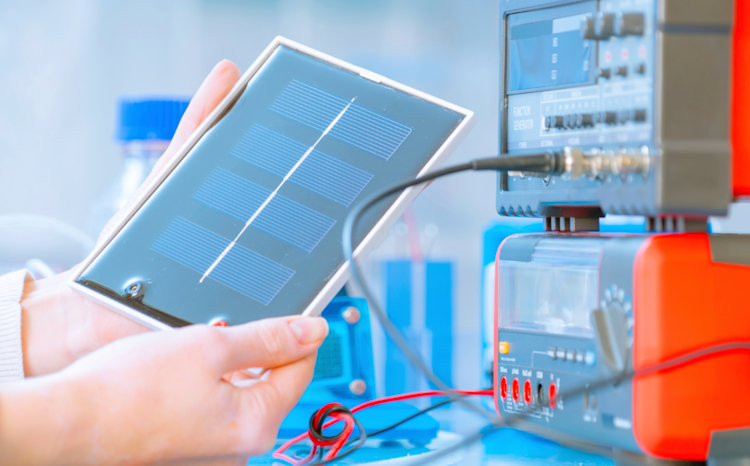
Lithium-ion batteries reign, and new powers rise
Batteries are a critical technology in today’s world, powering an ever-increasing array of products. Lithium-ion batteries, one of the leading battery technologies, were first developed by Sony in the 1990s. These types of batteries power many products today, including phones, laptops and many other appliances. With an energy density 2.5 times greater than competing technologies, lithium-ion batteries offer more power at lower weights while providing relatively long-life cycles. These traits didn’t just make lithium-ion a smart choice for gadgets, they also enabled the development and success of electric vehicles and saw lithium-ion batteries emerge as the dominant battery type for energy storage systems.
Today, lithium-ion batteries power most EVs and energy storage. Generac, ecobee’s parent company, provides lithium-ion energy storage solutions for home, business, and industrial applications. The PWRcell 2 battery energy storage system stores solar energy, offering dependable backup power during outages and overnight, helping reduce dependence on the grid and ensuring efficient energy usage.
While lithium-ion batteries keep getting better and cheaper, carving out a dominant position in the global battery market, there is still room for improvement on this now decades-old technology. As part of the global race to lead in renewables, governments and private sector players are investing billions of dollars in developing new battery chemistries that build on lithium-ion’s strengths, aiming to make them more even more affordable, efficient, sustainable, and safe.
Evolving batteries – LFP
A newly commercialized battery technology that’s going toe-to-toe with lithium-ion is lithium iron phosphate (LFP). The key difference lies in its chemistry—LFP replaces lithium-ion's use of rare metals like cobalt and nickel with the more abundant and affordable iron and phosphate. These readily available resources are also less harmful to mine, making LFP batteries more environmentally and socially sustainable.
From a performance standpoint, this change in chemistry results in longer-lasting batteries, though at the expense of lower energy density, meaning LFP batteries have a longer lifespan but hold less charge than their lithium-ion counterparts. These characteristics, coupled with the potential for future technological advances have led LFP’s share of the global EV market to grow from about 10% in 2018 to more than 40% in 2022, with most of that growth being in China, home to almost all LFP production capacity.
Evolving batteries – Solid state
One area in which lithium-ion and LFP and in fact all traditional chemical batteries fall short is that they need a special gel or liquid inside them to help move tiny particles (ions) between two parts of the battery. This movement is what creates electricity. Unfortunately, that liquid or gel results in a complex manufacturing process and can lead to extra weight and safety hazards if not manufactured and installed properly.
On the horizon, solid-state batteries promise to fix many of these problems. As their name implies, instead of using gel or liquid to shuttle around charges, they use ceramic or other solid materials. In doing so, proponents say they offer a trifecta of benefits over traditional chemical batteries: improved safety, greater energy density, and longer lifespans. With solid-state batteries expected to enter the market in the coming years, and with our ever-growing battery demands for EVs and in our homes, it will be interesting to see the impact they will have on our lives in another five years.

The more we grow, the greener it gets
ecobee smart thermostats help Smart Owners across North America reduce their carbon footprint, fight climate change, and save up to 26%* on heating and cooling costs. By saving money on heating and cooling, ecobee smart thermostats put up to $284 USD per year back in their owners’ pockets, which means ecobee thermostats pay for themselves in under a year.
Since launching the world’s first smart thermostat in 2009, ecobee has helped customers across North America save over 41.2 TWh of energy, which is the equivalent of taking all the homes in New York City off the grid for a year.

A new way for ecobee
While ecobee’s smart thermostats enable Smart Owners to start decarbonizing for a cleaner, greener future, ecobee the company is moving forward with its commitment to a holistic approach to sustainability. True to its word, in 2024 ecobee launched its first product developed entirely using its Comprehensive Sustainability Plan.
The Comprehensive Sustainability Plan provides a framework for taking sustainability into account at every stage of a product’s lifecycle, considering everything from design and development, to manufacturing, packaging, data centers, supply chain logistics, use, reparability, and end-of-life considerations.
As ecobee president Greg Fyke said in last year’s column, “This means that our products do more than save energy. We consider sustainability in all aspects of our work, from how we design and manufacture our products to be ‘built to last’ with industry-leading warranties to how we package and ship them. We also select partners who share this commitment.”
Smart Thermostat Lite is the first product to be guided entirely by our Comprehensive Sustainability Plan. This product embodies sustainability in every aspect of its design. Its compact design uses fewer materials and less virgin plastic. Enhanced firmware and screen-dimming features boost energy efficiency by reducing idle power consumption. Our latest thermostat also stays true to ecobee’s longstanding commitment to building longer-lasting products and designing for easy disassembly, which will help keep our products out of landfills even after their useful lives.
We consider sustainability in all aspects of our work, from how we design and manufacture our products to how we package and ship them.”
The launch of Smart Thermostat Lite, also marked ecobee’s complete transition to paper-only packaging. Remaining holdouts like baggies and cellophane wrap have been replaced with eco-friendly paper alternatives. Another eco-friendly innovation that displays ecobee’s commitment to sustainability is the inclusion of two innovative trays made from potato starch. These trays, unlike most of their kind, are not only recyclable but also compostable, an eco-friendly packaging innovation that extends across the entire thermostat lineup, including Smart Thermostat Premium and Smart Thermostat Enhanced.
Building on the success of Smart Thermostat Lite, ecobee will expand its Comprehensive Sustainability Plan to more products in 2025. Through conscious design, we aim to expand our impact and fulfill our mission of creating a more sustainable world.
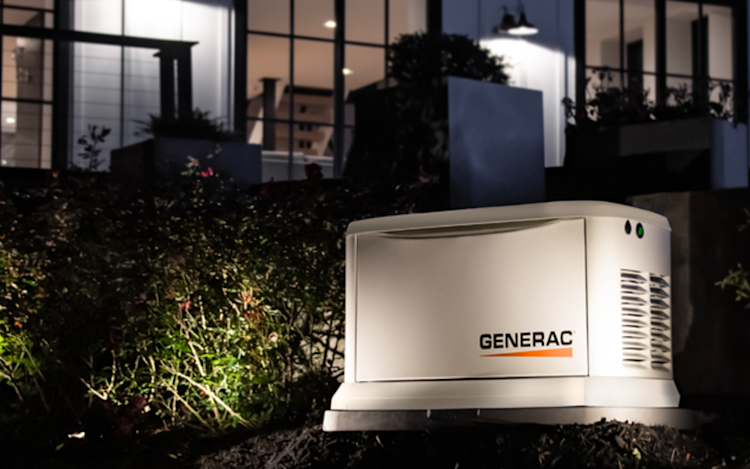
Positive climate news from Generac and ecobee.
In 2024, Generac, ecobee’s parent company, secured $300 million in U.S. Department of Energy grants to advance renewable energy projects nationwide. The company will be using funding to help update the nation’s aging infrastructure and help low-income Americans access to affordable and reliable clean energy when and where they need it. Learn more about key projects below.
Puerto Rico
- Generac was awarded a grant of up to $200 million over five years as part of a Puerto Rican program to deliver residential solar and battery storage systems to the islands most disadvantaged households. Learn more.
Massachusetts
-
In Massachusetts, where 77% of homes are currently heated by natural gas or petroleum projects, Generac has received a $50 million grant. The grant is to install ecobee smart thermostats and Generac batteries to deliver affordable, clean energy to lower income homeowners by installing batteries and thermostats that will optimize the use of electric heat pumps.
Did you know? Modern heat pumps are extremely energy-efficient electric-powered HVAC systems that can reduce your home’s carbon emissions by up to eight tonnes per year. That’s like taking a mid-sized car off the road. Learn more about heat pumps.
California
-
In partnership with California’s water utilities, Generac has been awarded a grant of $50 million to leverage industrial-grade batteries and Generac smart grid technology to keep critical infrastructure like water and wastewater systems working when the grid is under stress. In addition, with at least 55% of sites in disadvantaged communities, the project will improve air and water quality, reliability, and result in operational savings. Learn more.
“We’re honored to have been chosen to make a meaningful impact—environmentally and socially—by empowering lower-income families in Puerto Rico and Massachusetts through access to our resilient, clean energy solutions and by improving the resiliency of critical water systems across California," said Anne Hoskins, senior vice president, policy and market development, Generac.

Make 2025 your most sustainable year yet.
Thank you for reading this far. We hope you have enjoyed reading this year’s edition. Before you go, we’d like to offer you some impactful steps you can take to help protect the environment and curb climate change:
-
Replace your old thermostat with an energy efficient smart thermostat. Learn more
-
Upgrade your home’s energy system with solar panels or consider joining a “community solar program”. Enjoy powering your home with clean energy and reducing utility costs. Many governments offer tax credits and incentives for renewable energy installations.
-
Make your home more resilient and efficient with an energy storage solution like the Generac PWRcell 2. Store excess solar energy or power from the grid to use during outages or peak hours when electricity costs are highest, giving you greater control and peace of mind.
-
With over 100 models available in North America, from cars to utility vehicles, pickup trucks, and vans, plus government incentives to ease the cost, there’s never been a better time to buy an electric vehicle (EV). If you're a first-time EV buyer, consider investing in a universally compatible Generac level 2 charger for increased charging speeds over the level 1 charge that will come with your vehicle.
-
Explore sustainable fashion. The fashion industry accounts for 10% of global greenhouse gas emissions and current trends encourage customers to buy more than they need and discard in only a few years. Opt for second-hand shopping or choose eco-friendly brands to make a positive impact on both the planet and society.
-
Switch to eco-friendly household cleaners and hygiene and cosmetic products. If unsure if your products are environmentally friendly, you can find out on the Environmental Working Group (EWG) website. Products verified by EWG meet strict standards for health and transparency, in addition to environmental impact.
-
Choose recycled paper products or alternatives like bamboo and hemp. These options reduce deforestation and use less water and energy to produce. With major retailers like Walmart offering affordable, store brand recycled paper products, sustainable choices are easier and more accessible than ever.
-
Get involved in community sustainability projects. Join local initiatives like local tree-planting drives, urban gardening programs, and clean-up events to support the environment while connecting with like-minded people in your community.
Thanks for reading. May your year be filled with love, happiness and new adventures!
We hope to connect with you again soon.
Warm regards,
The ecobee Citizen Team
*Compared to a hold of 72°F/22°C.
Did you enjoy this article?
Thanks for letting us know!



